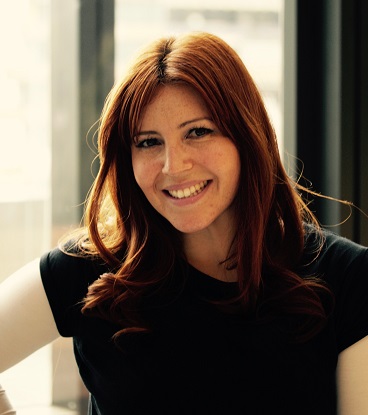31 Jan 2018
To get more kids into STEM, we need to change
Speaking to bluenotes on video and podcast, Kerr said a lack of willingness to let go of traditional learning metrics - despite fundamental changes to the way workforces operate – hasn’t helped kids.
"We're really concerned - and I'm concerned as an educator - that more and more kids have really disengaged from STEM.” - Kerr
“Some of the metrics that have been around for a long time basically define students by what they know,” he says. “Really what's king now is not the knowledge but how they apply knowledge.”
“We still need a way of measuring retention of fact but what else can we do to demonstrate kids are learning to be better problem solvers? Or be more-curious about the way they tackle problems or the way they work in groups?”
After 19 years in secondary teaching, Kerr resigned to run his own start-up – RTL - to create a new model for learning aimed at increasing engagement for students in STEM - science, technology, engineering and mathematics.
RTL builds capability in STEM through after-school workshops hosted in industry locations, facilitated by industry professionals and engineering undergraduates. The model provides opportunities to be inspired in a real world setting and enables learning by doing.
“We thought if we did this much earlier in the piece we could then start to engage kids and get them to understand why - and why it's important to connect with them,” he said.
“The reason we did that is because we're really concerned - and I'm concerned as an educator - that more and more kids have really disengaged from STEM.”
“We believe it's about getting the kids at an early age and unpacking why they need STEM… and for it to connect with purpose and something they're passionate about.”
“The enemy of our future prosperity is complacency,” Australian chief scientist Alan Finkel wrote in December.
“Past investments in skills development have underpinned our strong economy and enviable lifestyle, which in turn have diminished our sense of urgency.”
“While our school system remains above average among OECD countries, the achievement of our students across science, literacy and numeracy is declining.”
Indeed, there’s much to be done. As someone incredibly passionate about helping our youth think about their futures in a different way, I find it hard to argue with Finkel.
School leavers are not sufficiently ready for the jobs that are available, let alone the jobs of the future. I am driven to speak with people who are making leaps in this space.
“Help to build the enthusiasm of students and their teachers,” Finkel wrote. “Help parents to understand their role and the opportunities that will unfold for their children in the years to come.”
“Help to provide the tools that will support teachers and leaders in schools. Help to implement robust measurement systems so that we better understand what works and what doesn’t.”
- Carina Parisella
Access
It’s not hard to notice technology is rapidly changing the way we work and the roles we do. To meet the challenges of the digital era and international competition, employers need to access talent and a workforce with 21st century skills.
But if we look at the school system, we see that students are less connected to their purpose than they ever were. One in three students do not complete their university course. One in five students do not complete their first year of university.
Research shows in year seven, 70 per cent of school students find school engaging but in year nine it drops to 55 per cent.
“I think it's a bit of a disconnect,” Kerr says. “We see STEM as a great platform to teach 21st-century skills. You’ve got to give them a project.”
It takes a village to raise a child and there’s an abundance of programs inspiring our future leaders. Here’s a salute to the best programs out there helping the cause.
My top picks for STEM Education in Australia:
- Real Time Learning - STEM skills through industry based partnerships.
- Robogals – student-run organisation aimed at inspiring and empowering young women to consider studying engineering and related fields.
- Girl Geek Academy – global movement which encourages women to learn technology, create startups and build the internet.
- Code Camp - learn to code school holiday programs.
- GitHub Education - learn to code with GitHub Education, for the next generation of coders.
- Sphero, my top pick for kids at home – goes beyond code by incorporating robotics and technology with collaborative STEAM activities.
Kerr (and I!) will be speaking about this important topic - along with a stack of leaders from industry, government and academia - at the National Future Work Summit in Melbourne on May 30.
- Carina Parisella
Kerr also touched on the importance of industry support to education as well as working in tandem with schools and businesses to ensure better learning outcomes. You can watch the video above to find out more.
Carina Parisella is bluenotes innovation editor
The views and opinions expressed in this communication are those of the author and may not necessarily state or reflect those of ANZ.
editor's picks
18 Dec 2017
